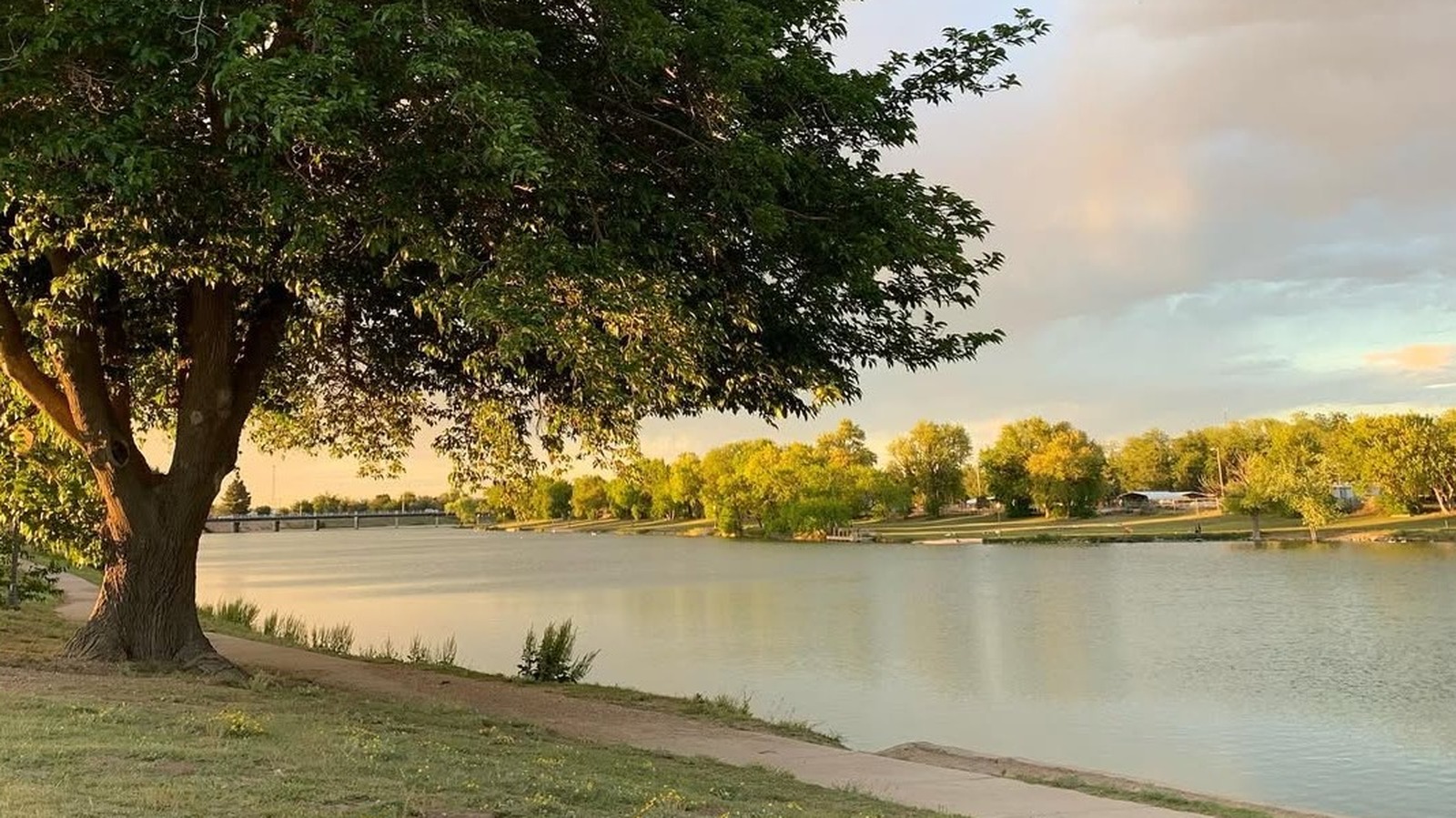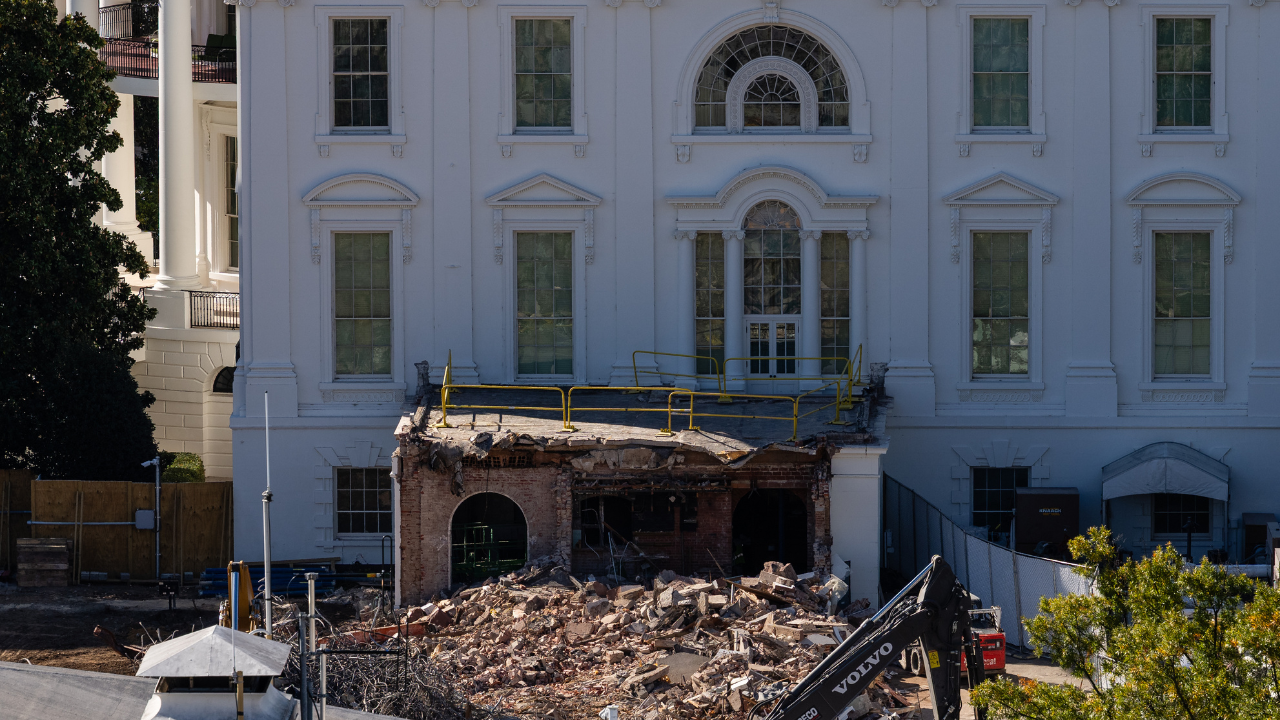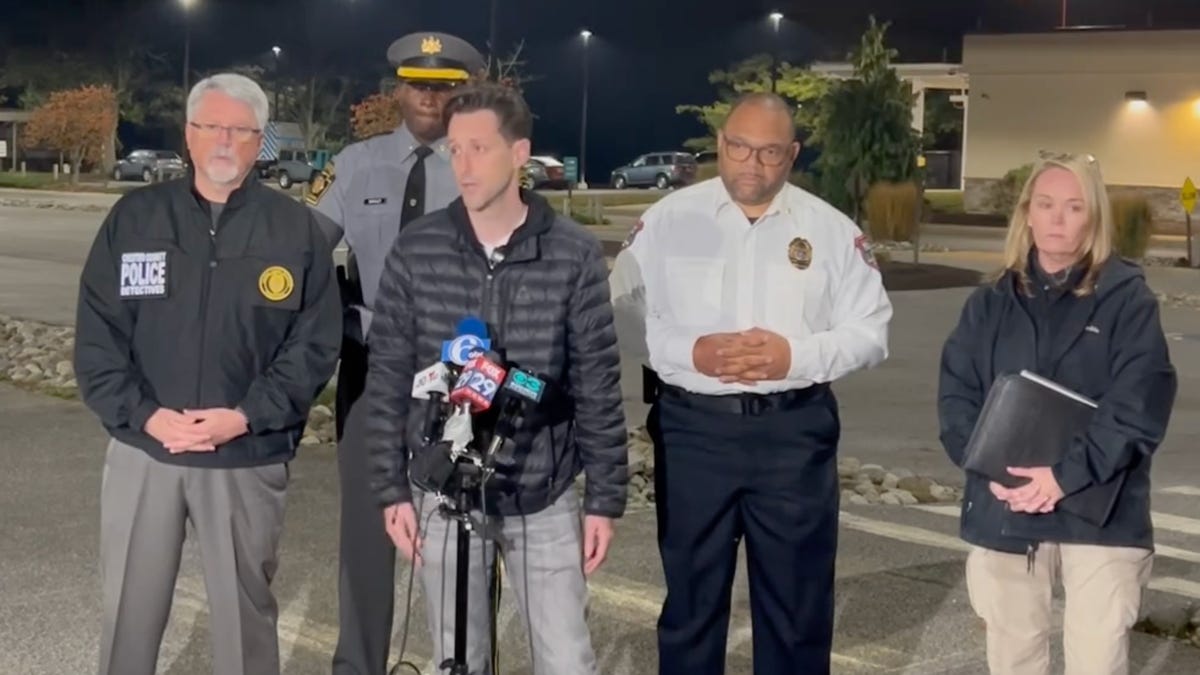Business
Sora app’s hyperreal AI videos ignite online trust crisis as downloads surge

Scrolling through the Sora app can feel a bit like entering a real-life multiverse.
Michael Jackson performs standup; the alien from the “Predator” movies flips burgers at McDonald’s; a home security camera captures a moose crashing through the glass door; Queen Elizabeth dives from the top of a table at a pub.
Such improbable realities, fantastical futures, and absurdist videos are the mainstay of the Sora app, a new short video app released by ChatGPT maker OpenAI.
The continuous stream of hyperreal, short-form videos made by artificial intelligence is mind-bending and mesmerizing at first. But it quickly triggers a new need to second-guess every piece of content as real or fake.
“The biggest risk with Sora is that it makes plausible deniability impossible to overcome, and that it erodes confidence in our ability to discern authentic from synthetic,” said Sam Gregory, an expert on deepfakes and executive director at WITNESS, a human rights organization. “Individual fakes matter, but the real damage is a fog of doubt settling over everything we see,”
All videos on the Sora app are entirely AI-generated, and there is no option to share real footage. But from the first week of its launch, users were sharing their Sora videos across all types of social media.
Less than a week after its launch Sept. 30, the Sora app crossed a million downloads, outpacing the initial growth of ChatGPT. Sora also reached the top of the App Store in the U.S. For now, the Sora app is available only to iOS users in the United States, and people cannot access it unless they have an invitation code.
To use the app, people have to scan their faces and read out three numbers displayed on screen for the system to capture a voice signature. Once that’s done, users can type a custom text prompt and create hyperreal 10-second videos complete with background sound and dialogue.
Through a feature called “Cameos,” users can superimpose their face or a friend’s face into any existing video. Though all outputs carry a visible watermark, numerous websites now offer watermark removal for Sora videos.
At launch, OpenAI took a lax approach to enforcing copyright restrictions and allowed the re-creation of copyrighted material by default, unless the owners opted out.
Users began generating AI video featuring characters from such titles as “SpongeBob SquarePants,” “South Park,” and “Breaking Bad,” and videos styled after the game show “The Price Is Right,” and the ‘90s sitcom “Friends.”
Then came the re-creation of dead celebrities, including Tupac Shakur roaming the streets in Cuba, Hitler facing off with Michael Jackson, and remixes of the Rev. Martin Luther King Jr. delivering his iconic “I Have A Dream” speech — but calling for freeing the disgraced rapper Diddy.
“Please, just stop sending me AI videos of Dad,” Zelda Williams, daughter of late comedian Robin Williams, posted on Instagram. “You’re not making art, you’re making disgusting, over-processed hot dogs out of the lives of human beings, out of the history of art and music, and then shoving them down someone else’s throat, hoping they’ll give you a little thumbs up and like it. Gross.”
Other dead celebrity re-creations, including Kobe Bryant, Stephen Hawking and President Kennedy, created on Sora have been cross-posted on social media websites, garnering millions of views.
Christina Gorski, director of communications at Fred Rogers Productions, said that Rogers’ family was “frustrated by the AI videos misrepresenting Mister Rogers being circulated online.”
Videos of Mr. Rogers holding a gun, greeting rapper Tupac, and other satirical fake situations have been shared widely on Sora.
“The videos are in direct contradiction to the careful intentionality and adherence to core child development principles that Fred Rogers brought to every episode of Mister Rogers’ Neighborhood. We have contacted OpenAI to request that the voice and likeness of Mister Rogers be blocked for use on the Sora platform, and we would expect them and other AI platforms to respect personal identities in the future,” Gorski said in a statement to The Times.
Hollywood talent agencies and unions, including SAG-AFTRA, have started to accuse OpenAI of improper use of likenesses. The central tension boils down to control over the use of the likenesses of actors and licensed characters — and fair compensation for use in AI videos.
In the aftermath of Hollywood’s concerns over copyright, Sam Altman shared a blog post, promising greater control for rights-holders to specify how their characters can be used in AI videos — and is exploring ways to share revenue with rights-holders.
He also said that studios could now “opt-in” for their characters to be used in AI re-creations, a reversal from OpenAI’s original stance of an opt-out regime.
The future, according to Altman, is heading toward creating personalized content for an audience of a few — or an audience of one.
“Creativity could be about to go through a Cambrian explosion, and along with it, the quality of art and entertainment can drastically increase,” Altman wrote, calling this genre of engagement “interactive fan fiction.”
The estates of dead actors, however, are racing to protect their likeness in the age of AI.
CMG Worldwide, which represents the estates of deceased celebrities, struck a partnership with deepfake detection company Loti AI to protect CMG’s rosters of actors and estates from unauthorized digital use.
Loti AI will constantly monitor for AI impersonations of 20 personalities represented by CMG, including Burt Reynolds, Christopher Reeve, Mark Twain and Rosa Parks.
“Since the launch of Sora 2, for example, our signups have increased roughly 30x as people search for ways to regain control over their digital likeness,” said Luke Arrigoni, co-founder and CEO of Loti AI.
Since January, Loti AI said it has removed thousands of instances of unauthorized content as new AI tools made it easier than ever to create and spread deepfakes.
After numerous “disrespectful depictions” of Martin Luther King Jr., OpenAI said it was pausing the generation of videos in the civil rights icon’s image on Sora, at the request of King’s estate. While there are strong free-speech interests in depicting historical figures, public figures and their families should ultimately have control over how their likeness is used, OpenAI said in a post.
Now, authorized representatives or estate owners can request that their likenesses not be used in Sora cameos.
As legal pressure mounts, Sora has become more strict about when it will allow the re-creation of copyrighted characters. It increasingly puts up content policy violations notices.
Now, creating Disney characters or other images triggers a content policy violation warning. Users who aren’t fans of the restrictions have started creating video memes about the content policy violation warnings.
There’s a growing virality to what has been dubbed “AI slop.”
Last week featured ring camera footage of a grandmother chasing a crocodile at the door, and a series of “fat olympics” videos where obese people participate in athletic events such as pole vault, swimming and track events.
Dedicated slop factories have turned the engagement into a money spinner, generating a constant stream of videos that are hard to look away from. One pithy tech commentator dubbed it “Cocomelon for adults.”
Even with increasing protections for celebrity likenesses, critics warn that the casual “likeness appropriation” of any common person or situation could lead to public confusion, enhance misinformation and erode public trust.
Meanwhile, even as the technology is being used by bad actors and even some governments for propaganda and promotion of certain political views, people in power can hide behind the flood of fake news by claiming that even real proof was generated by AI, said Gregory of WITNESS.
“I’m concerned about the ability to fabricate protest footage, stage false atrocities, or insert real people with words placed in their mouths into compromising scenarios,” he said.

Business
After ‘Megalopolis’ flops, Francis Ford Coppola puts his pricey watch collection up for auction
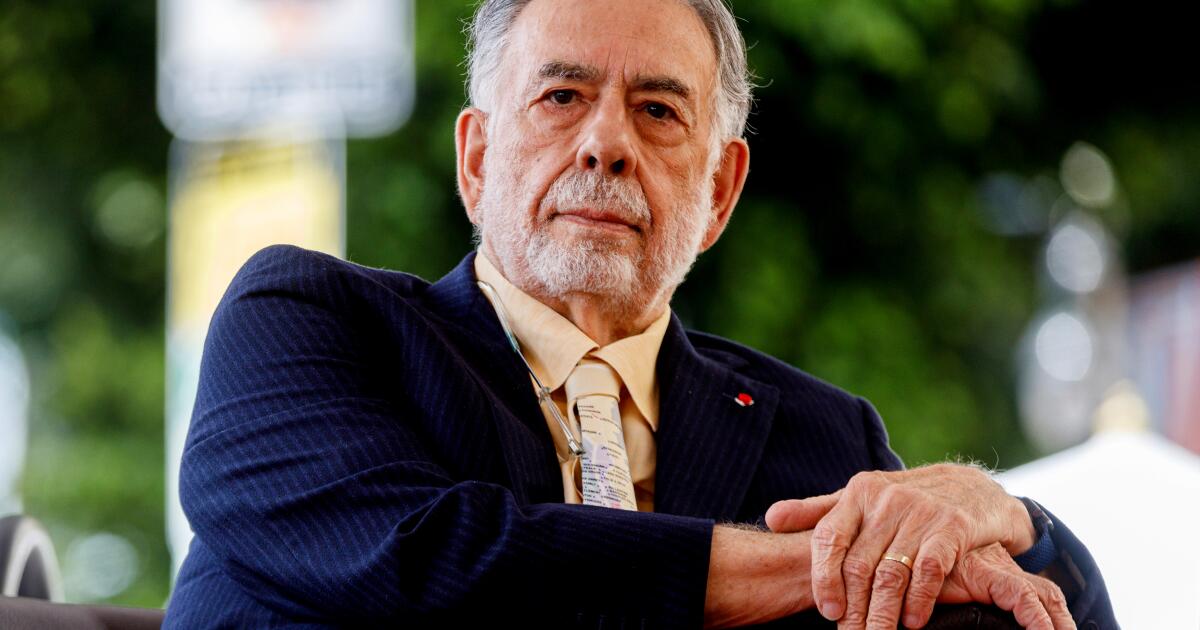
Francis Ford Coppola wants an offer he can’t refuse — on his timepieces.
The Academy Award-winning director is selling seven watches from his personal collection, including his custom F.P. Journe FFC Prototype, estimated to sell for more than $1 million, according to a statement from Phillips, the New York City-based auction house. Phillips will hold the auction on Dec. 6 and 7.
The sale could help stanch losses from last year’s box-office flop “Megalopolis,” which cost over $120 million to make and was largely financed by the 86-year-old director. The movie grossed only $14.3 million worldwide.
The film, Coppola’s first since his 2011 horror movie “Twixt,” premiered at Cannes last year to largely negative reviews. The Times’ Joshua Rothkopf called it a “wildly ambitious, overstuffed city epic.”
At a news conference at Cannes, Coppola discussed the tremendous amount of his own money that he had sunk into the film, saying that he “never cared about money” and that his children “don’t need a fortune.”
Among the Coppola timepieces also going under the hammer are examples from Patek Philippe, Blancpain and IWC.
But the headlining piece is the F.P. Journe FFC Prototype that features a black titanium, human-like hand that resembles a steampunk gauntlet that articulates the hours when the fingers extend or retract.
Francis Ford Coppola’s custom F.P. Journe FFC timepiece uses a single hand to indicate all 12 hours.
(Phillips)
The watch was a collaboration between Coppola and master watchmaker François-Paul Journe that began following a conversation the pair had during a visit he made to the filmmaker’s Inglenook winery in Napa Valley in 2012.
Coppola asked Journe if a human hand had ever been used to mark time. That question sparked a years-long conversation during which the watchmaker grappled with how to indicate the 12 hours of the dial using just five fingers.
Journe found his inspiration in Ambroise Paré, a 16th century French barber surgeon and an innovator of prosthetic limbs in particular, including Le Petit Lorrain, a prosthetic hand made of iron and leather that featured hidden gears and springs enabling the fingers to move, not dissimilar to a watch mechanism.
“Speaking with Francis in 2012 and hearing his idea on the use of a human hand to indicate time inspired me to create a watch I never could have imagined myself. The challenge was formidable — exactly the type of watchmaking project I adore,” said Journe in a statement.
Journe eventually created six prototypes and delivered Coppola’s watch to him in 2021.
“I’m proud to fully support the sale of this watch through Phillips to fund the creation of his artistic masterpieces in filmmaking,” he said.
Coppola first became interested in the watchmaker when he gifted his wife Eleanor an F.P. Journe Chronomètre à Résonance in platinum with a white gold dial for Christmas in 2009, prompting the director to extend an invitation to Journe to visit him at his Napa winery.
Eleanor Coppola, a documentary filmmaker and writer, died in 2024 after 61 years of marriage. Her F.P. Journe timepiece is also part of the auction and is estimated to fetch between $120,000 to $240,000.
Business
Disney warns that ESPN, ABC and other channels could go dark on YouTube TV
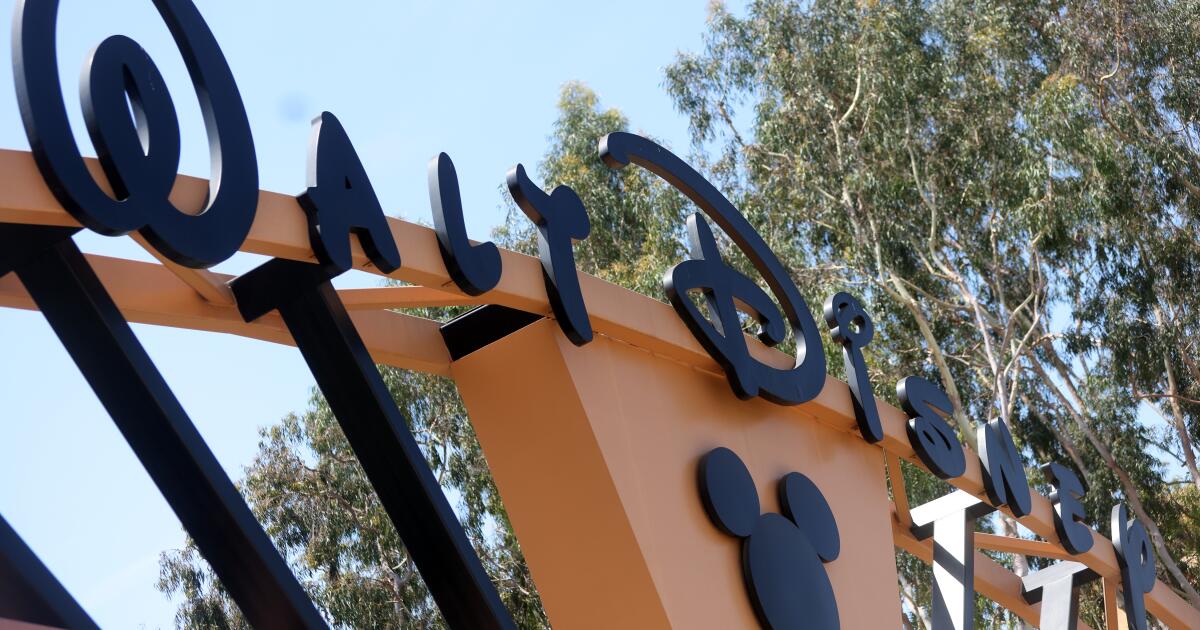
Walt Disney Co. is alerting viewers that its channels may go dark on YouTube TV amid tense contract negotiations between the two television giants.
The companies are struggling to hammer out a new distribution deal on YouTube TV for Disney’s channels, including ABC, ESPN, FX, National Geographic and Disney Channel. YouTube TV has become one of the most popular U.S. pay-TV services, boasting about 10 million subscribers for its packages of traditional television channels.
Those customers risk losing Disney’s channels, including KABC-TV Channel 7 in Los Angeles and other ABC affiliates nationwide if the two companies fail to forge a new carriage agreement by Oct. 30, when their pact expires.
“Without an agreement, we’ll have to remove Disney’s content from YouTube TV,” the Google Inc.-owned television service said Thursday in a statement.
Disney began sounding the alarm by running messages on its TV channels to warn viewers about the blackout threat.
The Burbank entertainment company becomes the latest TV programmer to allege that the tech behemoth is throwing its weight around in contract negotiations.
In recent months, both Rupert Murdoch’s Fox Corp. and Comcast’s NBCUniversal publicly complained that Google’s YouTube TV was attempting to unfairly squeeze them in their separate talks. In the end, both Fox and NBCUniversal struck new carriage contracts without their channels going dark.
Univision wasn’t as fortunate. The smaller, Spanish-language media company’s networks went dark last month on YouTube TV when the two companies failed to reach a deal.
“For the fourth time in three months, Google’s YouTube TV is putting their subscribers at risk of losing the most valuable networks they signed up for,” a Disney spokesperson said Thursday in a statement. “This is the latest example of Google exploiting its position at the expense of their own customers.”
YouTube TV, for its part, alleged that Disney was the one making unreasonable demands.
“We’ve been working in good faith to negotiate a deal with Disney that pays them fairly for their content on YouTube TV,” a YouTube TV spokesperson said in a statement. “Unfortunately, Disney is proposing costly economic terms that would raise prices on YouTube TV customers and give our customers fewer choices, while benefiting Disney’s own live TV products – like Hulu + Live TV and, soon, Fubo.”
Disney’s Hulu + Live TV competes directly with YouTube TV by offering the same channels. Fubo is a sports streaming service that Disney is in the process of acquiring.
YouTube said if Disney channels remain “unavailable for an extended period of time,” it would offer its customers a $20 credit.
The contract tussle heightens tensions from earlier this year, when Disney’s former distribution chief, Justin Connolly, left in May to take a similar position at YouTube TV. Connolly had spent two decades at Disney and ESPN and Disney sued to block the move, but a judge allowed Connolly to take his new position.
YouTube TV launched in April 2017 for $35 a month. The package of channels now costs $82.99.
To attract more sports fans, YouTube TV took over the NFL Sunday Ticket premium sports package from DirecTV, which had been losing more than $100 million a year to maintain the NFL service. YouTube TV offers Sunday Ticket as a base plan add-on or as an individual channel on YouTube.
Last year, YouTube generated $54.2 billion in revenue, second only to Disney among television companies, according to research firm MoffettNathanson.
The dispute comes as NFL and college football is in full swing, with games on ABC and ESPN. The NBA season also tipped off this week and ESPN prominently features those games. ABC’s fall season began last month with fresh episodes of such favorite programs as “Dancing with the Stars” and “Abbott Elementary.”
ABC stations also air popular newscasts including “Good Morning America” and “World News Tonight with David Muir.” Many ABC stations, including in Los Angeles, run Sony’s “Wheel of Fortune” and “Jeopardy!”
“We invest significantly in our content and expect our partners to pay fair rates that recognize that value,” Disney said. “If we don’t reach a fair deal soon, YouTube TV customers will lose access to ESPN and ABC, and all our marquee programming – including the NFL, college football, NBA and NHL seasons – and so much more.”
Business
10 years since Aliso Canyon: Disaster was wake-up call for U.S. on dangers of underground gas

On an evening 10 years ago, Porter Ranch resident Matt Pakucko stepped out of his music studio and was walloped by the smell of gas — like sticking your head in an oven, he recalled.
Pakucko called the fire department. It turned out crews had already been up to the Aliso Canyon gas storage facility in the Santa Susana Mountains behind the neighborhood, responding to a report of a leak. Many of his neighbors were beginning to feel ill, reporting issues such as heart palpitations, vomiting, burning eyes and bloody noses.
“I swear I thought I was standing behind a 747 with its engines blowing — it was not just gas, it was oil smell, it was chemical smell that permeated,” recalled Pakucko, who went on to co-found the advocacy group Save Porter Ranch. “I couldn’t stay out there for 30 seconds. It tasted like f— gasoline.”
Soon it was clear that this wasn’t just a leak — it was a blowout. Over the course of 112 days, the Aliso Canyon facility would spew an estimated 120,000 tons of methane and toxic chemicals into the atmosphere. It was the worst natural-gas well blowout in U.S. history, and an environmental disaster whose effects will be unpacked for generations.
The event was widely seen as a wake-up call to the dangers of methane and underground natural gas storage. Methane, a planet-warming greenhouse gas, is about 80 times more potent than carbon dioxide and is responsible for about a quarter of all the human-caused climate change we are experiencing. A study published by UCLA researchers last month found that women in their final trimester of pregnancy who were living within 6.2 miles downwind of the blowout in 2015 had a nearly 50% higher-than-expected chance of having a low birth-weight baby.
The blowout ushered in a wave of new regulations to strengthen the governance of natural gas storage facilities in California and the United States, as well as new tools and technology to monitor methane emissions.
But 10 years later, some Porter Ranch residents say the wounds still feel fresh, and too many promises have been broken. After the disaster, then-Gov. Jerry Brown called for the permanent closure of Aliso Canyon by 2027 — a goal his successor, Gavin Newsom, called a top priority and vowed to meet even sooner.
Instead, Aliso Canyon remains open, with regulators voting in December to continue using the facility for years — probably into the 2030s — citing the need for natural gas to help maintain affordable energy rates and grid reliability in California.
The facility is a key asset for Southern California Gas. In an emailed statement, the company said the state would struggle to meet electricity demand without Aliso Canyon’s storage. The site fuels 17 power plants and helps keep the lights on during the hours that can’t yet be met by solar, wind and other renewable resources, the company said. Natural gas still represents about 40% of the state’s electricity supply.
“There’s a lot of work to do to get off natural gas and oil in California,” said Adam Peltz, senior attorney with the nonprofit Environmental Defense Fund. “That work is underway, but it’s not complete. If you’ve built an economy on fossil fuels, it takes awhile to get off of it.”
Aliso Canyon was originally drilled as an oil field in the late 1930s before SoCalGas converted it to natural gas storage in the early 1970s. Utilities often use played out crude oil fields as places to pump gas downward under pressure and hold it until it is needed.
Aliso Canyon is one of the largest natural gas storage facilities in the U.S.
In the lead-up to the blowout, SoCalGas was filling the site in preparation for the winter heating season. Crews were using tremendous force to pump gas down a well that was more than 60 years old. But a metal casing on well SS-25 had corroded, and gas began blowing out at very high volumes.
Methane is not visible to the naked eye, but aerial images captured with infrared cameras and released by the Environmental Defense Fund showed a geyser-like eruption of the flammable, climate changing gas — making it clear to the whole world the magnitude of the disaster.

Matt Pakucko, right, founder of Save Porter Ranch, and other protesters against SoCalGas hold a rally at the intersection of Tampa Avenue and Rinaldi Street on Sept. 28, 2021, in Porter Ranch.
(Irfan Khan / Los Angeles Times)
It took nearly four months for crews to stop the leak. By that time, damage was done. More than 8,000 households were temporarily displaced, businesses were shut down, and two schools were relocated for several months.
Researchers are still working to unpack the health outcomes of the event. SoCalGas, meanwhile, has paid about $2 billion in settlements and agreed to operate the facility at a lower maximum pressure.
Officials with the gas company said they have shored up the facility, including replacing the inner steel tubing on all operating wells and conducting continuous ambient methane monitoring. All wells at the site are subject to real-time pressure readings and visual inspections four times a day, among other protocols, SoCalGas said.
“Over the past 10 years, SoCalGas has conducted comprehensive safety reviews and implemented multiple safety layers that protect one of California’s most important assets for energy reliability and affordability,” the company said.
While the maximum allowable operating pressure at the site remains reduced — about 3,183 pounds per square inch compared with 3,600 pounds per square inch in 2015 — state officials recently voted to let SoCalGas increase storage at the facility to 68.6 billion cubic feet of natural gas from 41 billion cubic feet, outraging many in the community.
But experts say there are silver linings to the disaster. California overhauled its underground natural gas storage regulations to make them the strongest in the nation and among the strongest in the world, according to Peltz, of the Environmental Defense Fund. The changes include more thoughtful rules for well construction, better monitoring and risk management, and improved planning and emergency response.
Congress reacted to the disaster by requiring its regulatory agency, the Pipeline and Hazardous Materials Safety Administration, to issue safety standards for natural gas storage nationwide. In 2016, it adopted best practices recommended by the American Petroleum Institute, which were strengthened at the beginning of this month.
Many states with natural gas storage previously had no regulations at all, Peltz said.
“On a national basis, the systems will be safer as a result of that change,” he said.
There have been technological advancements too. The infrared aerial recording of the leak captured in 2015 was a relatively new technique at the time, but has now become commonplace. The California Air Resources Board conducted its first large-scale statewide aerial methane survey in 2016, identifying many of the largest methane sources in the state.
There have also been considerable advancements in the ability to observe methane super-emitters through satellites and remote sensors, according to Seth Shonkoff, executive director at the science research institute PSE Healthy Energy and an associate researcher at the UC Berkeley School of Public Health.
“The rub is that we know more than we ever have, and we’re perhaps controlling more than we would have if we didn’t have the technology to see them, but we’re still seeing more and more of these large-scale emission events all across the United States and all across the world,” he said.
Methane concentrations in the atmosphere are still rising. It is streaming, often constantly, from facilities associated with the oil and gas industry, landfills and dairy farms, among other sources.
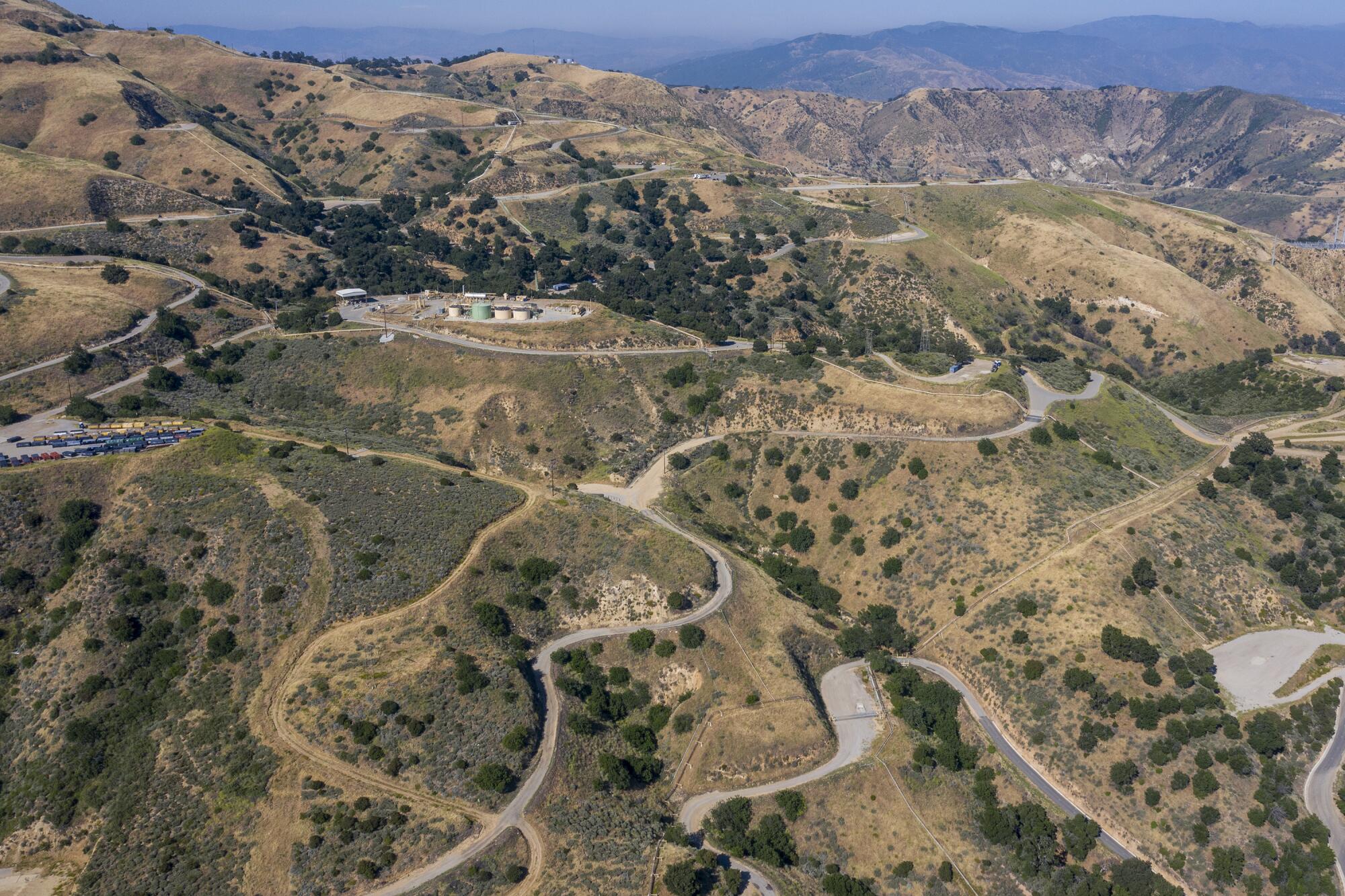
The Aliso Canyon Southern California Gas storage facility on May 28, 2020.
(Robert Gauthier / Los Angeles Times)
Methane isn’t the only concern either. Researchers now have a better understanding of what’s in the gas that blew from Aliso Canyon and that continues to be stored in natural gas facilities around the country. Although it is primarily composed of methane, roughly 99% of samples analyzed by Shonkoff and his team have contained hazardous air pollutants such as benzene, hexane and toluene, largely as a result of commingling with depleted oil and other subsurface materials.
Moving forward, he said, it will be critically important for gas companies to disclose to regulators and risk managers what their gas is composed of, so that if it leaks, responders can quickly determine the appropriate response.
“If we had had that with Aliso Canyon, we could have, within a matter of hours, understood whether people should get out of the way or stay inside, and we wouldn’t have had as many people suffering from health symptoms,” Shonkoff said.
In 2024, the Biden administration passed the first comprehensive rules to limit methane pollution by fining oil and gas developers for excessive emissions. But this year, the Trump administration revoked the rule, which it described as a tax.
At the same time, many natural gas storage facilities across the country are old and require retrofitting to meet current regulations, but such upgrades can be slow and expensive — often leaving ratepayers on the hook.
Residents near Aliso Canyon have also long feared an earthquake or wildfire in the area. The gas field sits along the Santa Susana fault and is in a high fire hazard severity zone. SoCalGas says it has numerous safety plans and procedures in place.
Perhaps the greatest tension remains between those who wish to see Aliso Canyon shuttered and the officials who say the facility is critically important to California’s energy supply, which is increasingly trying to serve power-hungry artificial intelligence data centers.

Dozens of Porter Ranch protesters chant “shut it all down,” as they demonstrate at the Aliso Canyon gas storage facility in Porter Ranch on May 15, 2016.
(Francine Orr / Los Angeles Times)
California has committed to reaching 100% carbon neutrality by 2045. But SoCalGas says it still needs Aliso Canyon.
“SoCalGas is aligned with the state of California in pursuing the technologies and infrastructure that supports California’s climate plan, including clean renewable hydrogen and renewable natural gas, that could, over time with other renewable energy projects, deliver the reliability and affordability Aliso Canyon supports today,” the utility said in a statement. However, any decision to reduce or eliminate operations at Aliso Canyon must be based on genuine reduced demand that is permanent, the company said.
Pakucko, of Save Porter Ranch, noted that the facility was offline for two years after the blowout without an interruption in service.
“Two years!” he said. “And guess what? We managed without the facility.”
For others in the area, it feels like the latest in string of broken promises.
Among SoCalGas’s settlement agreements was a $120-million consent decree with the state of California requiring the utility to fund methane mitigation projects, air monitoring and other initiatives to address alleged harms caused by the blowout. About $25 million of that went toward a long-term health study on the effects of natural gas exposure, which is being conducted by researchers at UCLA. The results are eagerly awaited.
About $26 million went to a program for dairy digesters in the Central Valley, which capture methane from cow manure before it enters the atmosphere. Many had hoped those funds would be spent closer to home, including former L.A. Mayor Eric Garcetti, who at one point envisioned the mitigation money being used to transform Porter Ranch into a net-zero community.
“That would have been so great,” said Patty Gleuck, a Porter Ranch resident who served on the community advisory group for the health study. Instead, “that money went to this dairy digester program that does not benefit this area.”
Like Pakucko, Gleuck recalled suffering health effects during the blowout, including a tightness in her chest and a metallic taste in her mouth that dissipated when she left the area and resumed when she returned.
She still suffers from a chronic cough and uses an inhaler, she said, adding that “a lot of inhalers were prescribed in the area.”
“A lot of people moved away, taking a loss on their homes because they were so sick, or their family members were sick,” she said. “I just don’t think that there has been justice.”
-

 New York3 days ago
New York3 days agoVideo: How Mamdani Has Evolved in the Mayoral Race
-

 World6 days ago
World6 days agoIsrael continues deadly Gaza truce breaches as US seeks to strengthen deal
-

 News5 days ago
News5 days agoVideo: Federal Agents Detain Man During New York City Raid
-

 News5 days ago
News5 days agoBooks about race and gender to be returned to school libraries on some military bases
-

 Technology6 days ago
Technology6 days agoAI girlfriend apps leak millions of private chats
-

 Politics6 days ago
Politics6 days agoTrump admin on pace to shatter deportation record by end of first year: ‘Just the beginning’
-

 News6 days ago
News6 days agoTrump news at a glance: president can send national guard to Portland, for now
-

 Business6 days ago
Business6 days agoUnionized baristas want Olympics to drop Starbucks as its ‘official coffee partner’



